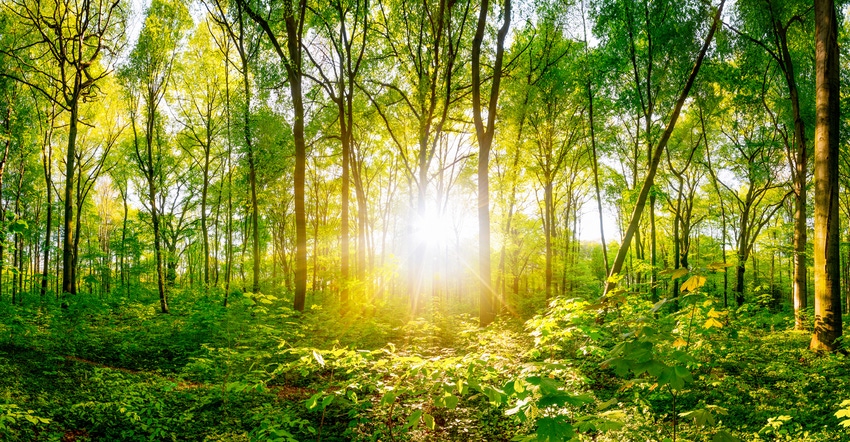November 14, 2022

A main theme that arborists and foresters follow is: “Proper plant in the proper place.”
Or in other words, make sure the tree you select and plant is properly suited for the soils, aspect, pests and diseases, and required space where it will be planted. Many times, I see plants placed in sites that are not suited for heavy wet soils, shade vs. sun, limited growing space or elevated soil pH.
For example, conifers do not like wet feet from poorly drained and chronically wet soils. Additionally, if conifers are planted too close together when they are small, they will eventually grow and begin to shade out the lower branches. This results in needle shed, with bare and usually dead branches and loss of aesthetic appeal. Also, because of poor air circulation, the humid springs and early summers of the Midwest promote needle cast diseases, which also contribute to dead needles and needle drop.
If you want the conifer look, white pine is a native pine, but is intolerant of drought, prefers acidic soils and is moderately tolerant of poor drainage. Be sure to allow plenty of growing space between trees at planting.
Native hardwoods such as oaks have a similar story. They do not like wet feet and are not especially tolerant of droughty conditions. Oak species that perform well in the Midwest include bur oak, shingle oak, Shumard’s oak, swamp white oak and white oak. With the exception of swamp white oak, which will tolerate wetter soils, all of these oaks need to be on well-drained sites to thrive.
Another popular tree characteristic is red fall color, commonly found with red maple and related cultivars and varieties. However, too much of a good thing is not always good. When selecting a plant for its red fall color, consider other choices to create more diversity in your landscape. Red maples are subject to chlorosis when planted on alkaline soils, prone to frost and cold damage, and are a favorite host of exotic and native wood-boring insects.
If orange or red fall color is a goal, then you might consider sweet gum for central and southern Illinois, or serviceberry, northern red oak, witch-hazel, Frontier elm or American hornbeam. For larger shrubs, smoke tree or bush or fragrant sumac are good choices. Plants to avoid with red fall color include winged euonymus or “burning bush,” barberry, and Callery pear, as they are considered invasive plants.
Plant right
When planting, be sure to plant at the proper depth, backfill with the soil from the planting hole, construct a bowl-like “tree well” to collect rainwater, and apply no more than 3 to 4 inches of mulch to help conserve soil moisture, prevent weeds and keep lawnmowers and weed whips away from the trunk. If the tree is ball and burlapped, avoid fertilizing the tree until the root system is established. In the first few years, focus on proper watering and plant health care so the plant can regenerate its root system.
It takes about one year of growth for each inch of diameter for root development. Once roots are established, then the plant will have the ability to take up nutrients. For bare-root or trees grown in containers, fertilizer can be applied at planting, as they already have an existing root system. A slow-release fertilizer or organic mulch is best, as the plant will have the opportunity to take up the nutrients throughout the season.
Of course, water as needed, especially during hot, dry weather and even into the fall before the ground freezes. We are still very dry across Illinois, so be sure to keep soils moist, but do not overwater. Watering is especially important for evergreens, as they will transpire even during the winter months. They can suffer from physiological drought when the water in the soil is frozen but air temperature is in the 40s and 50s with sunshine and light breezes — what we’d call a midwinter thaw.
For further information on proper tree selection for your area, consult your local nursery or garden center, landscaper, arborist, Extension office, district forester, or the Morton Arboretum website.
Miller is a horticulture professor at Joliet Junior College in Joliet, Ill., and a senior research scientist in entomology at The Morton Arboretum in Lisle, Ill. Email your tree questions to him at [email protected].
About the Author(s)
You May Also Like




